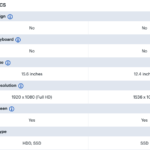Companies with deep analytical capabilities are seeing massive gains from MOQ implementation. These initiatives reduce small orders, increase warehouse efficiency, reduce inventory write-offs, make money-losing small accounts into money makers, increase sales and significantly boosts profits.
For almost half a century, it’s been broadly known that small orders eat profits. Put simply, your organization has costs to cover to move product through your system. At peak performance, you’ll incur a certain minimum cost to procure, handle and deliver something to a customer. If there isn’t sufficient OpCash in the order to cover this cost, you’re taking profits made elsewhere to subsidize losses in your fulfillment process.
This is the “death by a thousand cuts” problem that prevents companies from achieving superior profit rates. In almost all companies, more than 60% of orders fall into this category, and changing this is the only way to industry-leading profits and cash-flow. If you can’t fix this, you can’t get there.
Period.
For the same half-century, the industry has been attempting to address this known issue with – to be generous – mixed results. Order minimums and small-order charges have had some effect, but haven’t moved the needle very far.
Sales-driven efforts have almost universally failed.
MOQs, however, are highly effective in addressing this pernicious issue and, for a broad swath of industries and customer relationships, are the best answer.
Simply put, MOQs are the minimum quantities you’re willing to sell, for each product and to most of your customers. I’m qualifying this because there are customer relationships that are NOT helped by MOQs, and these need to be excluded.
We’ve been providing MOQ analyses for our clients for a while now, and they can result in highly targeted changes that really produce significant results.
With a detailed analysis of the profit rates at each pick quantity for every product sold, our clients can set minimum sell quantities for all low-value items, cutting huge swaths of transactions out of their small-order envelope.
Let’s look at a single item from an MOQ analysis. The report shows unit revenue, gross profit, expenses and NBC (profit) for a single SKU at each pick quantity during the year. It also shows average margin, average profit rate and number of times the product was picked at each quantity level. (To explain where the MOQ numbers come from, our online system integrates all the costs from the client’s G/L into their invoice data, costing every sale down to the line level.)

MOQ analysis for the same SKU, highlighting the profit rate at each pick quantity.
In the above report, we can compare the profit rate to the pick quantity, and see that a larger pick quantity generally results in better profit production for this item that sells for around $4.00. So why isn’t the profit rate linear? At first thought, it seems that the larger the pick quantity, the higher the profit rate should be. But it’s not.
Our system does a much more complete analysis than just the logistical costs for picking in the warehouse. It also accounts for the all-in costs of the complete service model, reflecting what other items were in the same order, what else shared the costs of the delivery, collections and overhead. It also accounts for the impact of the shared costs for all the products the customers bought along with the item we’re looking at.
For instance, purchases at quantity 36 and quantity 114 were likely for specific projects that needed these precise quantities and not much else, so there was less additional product to share logistical costs. This is the dynamic that really affects profits, and is completely unseen in a more simple analysis.
So, the first take-away is that selling quantity 1 of this $4 item is a complete losing proposition, but moving to quantity 2 puts it in the black.

MOQ analysis with money-losing quantity (red), and useful price breaks (green).
Second, there’s a ton of margin erosion above quantity 12, dropping from at least the mid-twenties to 10-13%. Why? The sales are profitable, but well below what I’d expect. This is a subject for investigation, asking if the sales at these quantities are being discounted too much. It’s entirely reasonable to find the absolute cash-flow value of these larger (and profitable) customer orders are a real benefit, and should be left alone.
This is a Leveraged Solution.
There’s a very important and frequently-overlooked dynamic to MOQs that you need to know about.
When a customer who repeatedly buys a low-value item in quantity 1 is moved to quantity 3, you not only lose less money on the sale, it also prevents him from returning for two more money-losing repetitions of the quantity 1 sales.
Dead Inventory
MOQ discipline can substantially reduce the production of dead inventory.
When implementing an MOQ program, be sure to take case and carton quantities into account, using them as a guide for your minimums. Where it’s not practical to set MOQs at the case or carton level, using sub-multiples is important. Here’s why.
A client of ours in the janitorial industry sells spray bottles which come in six-packs selling for around $9. He routinely breaks these packs to sell whatever quantity the customer wants. This results in numerous open cartons with various quantities the warehouse people have to work around. Inevitably, product falls on the floor where it gets damaged or dirty, and becomes unsaleable while contributing to the workload of picking orders. This hurts warehouse productivity, increasing manpower and costs.
This means he has more manpower than he needs, and does a poorer job of converting all his inventory value into profit.
If he set his MOQ to 3, he’d sell either a full case or a half case on each sale, and there’s never be more than a single open case. This is a significant productivity and profitability boost.
Use MOQ Information to Set Price Breaks
Good use of your MOQ analysis can really inform your price breaks.
You can choose your breaks at or near the natural quantities your customer have been buying at, or choose points that encourage case or carton orders.
Not All Customers Are the Same
You may choose to waive MOQs for customers that buy in volume. If your top account contributes $100,000 to your profit line, you can choose to take the hit for waiving MOQs, so it doesn’t become an irritant in your relationship.
This is important to mention, but you’ll likely find that customers that contribute significantly to your bottom line are rarely the ones where small unit quantities are an issue.
What Situations are Best for an MOQ Program?
MOQs work best where you’re selling into customer inventory. Restocking shelves, bins or supply closets means ship quantities are somewhat flexible, and the inventory buffer reduces stockouts that can otherwise reduce usage of the product by the end user.
Conversely, if the product is being purchased for specific jobs where the needed quantities are fixed, MOQ analysis may suggest the best package quantities for the vendor to provide. This is an area where your professional buyers can shine.
Policy Decisions?
You’ll need to decide on the policies used to actually implement MOQs.
One way is to refuse to accept or fill product orders that fall below your MOQ. I don’t prefer this, as it will cause a lot of friction with accounts, and consume a lot of customer service time communicating and correcting the resulting stoppages.
I think a better method is to up the quantity to your MOQ level and fulfill on that basis. The customer gets his product, and the friction is limited to the much smaller number of cases where the customer disputes the order. Be careful not to allow the customer to convert the increased ship quantities into costly product returns. On low-value items to high-value accounts, it may be cheaper to write of the collection incremental revenue, than to recover the inventory. And it’ll reduce near-term small quantity orders of the same items for that customer.
You will likely have customer classes for which your MOQ policy does not apply.
Why are MOQ Programs So Effective?
MOQ programs can be extremely effective, changing the profit rate of your company in a big way, and quickly. This is because:
- they have a very short change chain. That is, there are few steps and a very limited number of people (all of them in your company) required to implement
- they’re largely an automated solution – using database queries to bulk update quantities and price points, and then loading the results into your system
- they reduce the frequency of losses on immediate sales, while also preventing large numbers of future money-losing sales (because the customer will already have some inventory on hand)
- the customer will be more productive by having fewer local inventory stockouts
Summing up MOQs
Implementing and then maintaining MOQs into the future can be one of the most productive items a management team can do. The program is a reasonably quick and easy way to permanently improve the company’s results. It also helps customers be more profitable, because it prevents them from spending their own resources on activities with a negative cost/benefit ratio (for them).
MOQs directly address the small-order problem without needing people to think it through on every sale. It’s durable because once done, the benefits accrue while everyone moves on to other things.
MOQ analysis and resulting policy and system updates are one of the most effective tools available to companies in the quest to gain both profits and market share.
This has been a game-changer for companies in search of new profits. It’s something you can do right now, and can permanently boost your profit rate.
 Randy MacLean is founder of WayPoint Analytics, the inventor of LIPA, & best-selling author of a series of profit practices books. For more than a decade, he’s been analyzing company results, thinking about, writing about & advising on profit issues in distribution & manufacturing. This article is adapted from a section in Profit-Driven Analysis & Practices: The CEO’s Guide to Record Profits by Randy MacLean. The book explains the field of LIPA (Line-Item Profit Analytics), and how you can use its unique metrics and strategies to out-perform everyone else in cash-flow, profits, and market share. Learn more about WayPoint Analytics at WayPointAnalytics.net or reach Randy at (480) 426-9955 or info@waypointanalytics.com.
Randy MacLean is founder of WayPoint Analytics, the inventor of LIPA, & best-selling author of a series of profit practices books. For more than a decade, he’s been analyzing company results, thinking about, writing about & advising on profit issues in distribution & manufacturing. This article is adapted from a section in Profit-Driven Analysis & Practices: The CEO’s Guide to Record Profits by Randy MacLean. The book explains the field of LIPA (Line-Item Profit Analytics), and how you can use its unique metrics and strategies to out-perform everyone else in cash-flow, profits, and market share. Learn more about WayPoint Analytics at WayPointAnalytics.net or reach Randy at (480) 426-9955 or info@waypointanalytics.com.
Related Posts
-
Optimize operations, prevent theft and prioritize employee health with the assistance of IoT at work,…
-
Strong taxonomy and product data allow functions such as attribute filters and indexable search to…
-
The pandemic has placed some business owners at a crossroads as to whether they should…






